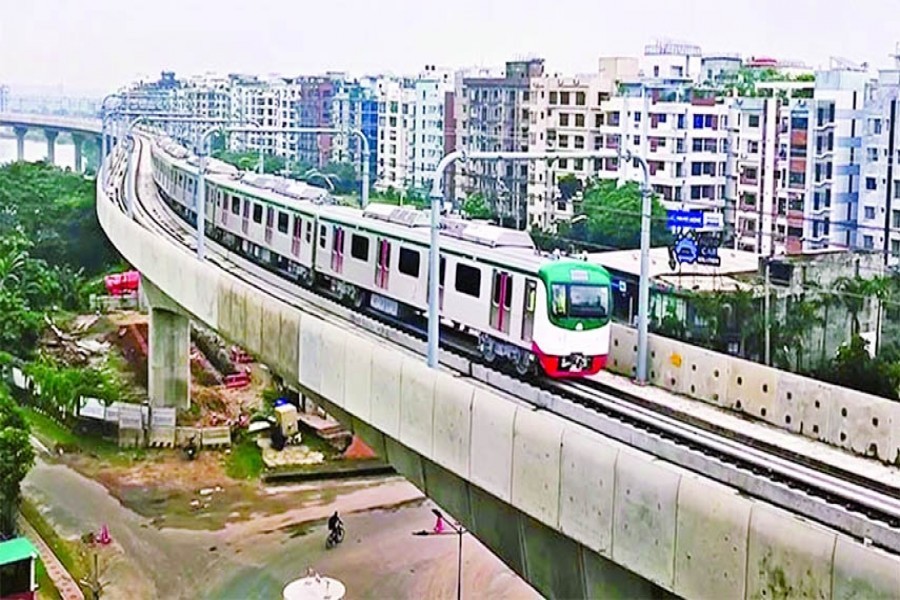
Published :
Updated :

Nobody knows when the disorderly public transports in Dhaka will become disciplined and comfortable to the commuters. Though a number of cost-intensive mega communication projects are being implemented, it is difficult to predict how and when all these will be fully and effectively operational.
Moreover, a number of these projects are flawed and unlikely to bring the desired benefit. Take the example of the Bus Rapid Transit (BRT) project between Gazipur and Dhaka airport. Started a decade back, the progress of the project is slow. Delay in completion has already increased its total cost to Tk 42.68 billion from Tk 20.40 billion. The construction work of the dedicated bus lane has become a nightmare for the regular commuters on the Dhaka Airport-Gazipur road and the inhabitants nearby.
There is, however, optimism that Dhaka Metro will significantly ease the terrible sufferings of the daily commuters. The fully elevated rail service is projected to carry 60,000 passengers per hour covering the entire route of 21.26km from Uttara to Motijheel-Kamalapur Railway Station in just 40 minutes. Funded by Japan's international aid agency JICA, the total cost of the project stands at Tk 360 billion.
This is the first metro rail route in the country and is expected to come into commercial operation by the end of the next year. The minimum fare for the first metro rail service has been proposed at Tk20 and the maximum at Tk 90. Limited test runs have already started and it will take a few more weeks to start the full-fledged trial run.
There are several benefits the metro rail is likely to bring. These include less use of private cars and motorcycles, reducing pressure on public buses, cutting traffic congestion on roads, reducing fuel consumption and saving time. To what extent the commuters and inhabitants in Dhaka reap the benefits will be visible after a year of full operation of the service.
In 2014, Delhi Metro helped keep more than 0.39 million vehicles off roads. So, the estimated saving was Rs 103.64 billion in terms of less fuel consumption, less pollution and less time and less decongestion on roads. Today, Delhi Metro is one of the most efficient mass rapid transit in Asia. It is projected that the first metro rail project will save of Tk 200 billion annually which is equivalent to around 1.50 per cent of gross domestic product (GDP) and 17 per cent of the total tax revenue.
As commuters have to use lifts, escalators and stairs to get into and get out of the station, it will be challenging for many. The second storey of the three-storey station will have ticket booths. On the third storey will be the railway track and the platform. Arrival at or exit from the stations will create traffic congestion on adjoined footpaths and roads. The plan to introduce a feeder bus service by Bangladesh Road Transport Corporation (BRTC) will, however, somehow reduce the problem.
As it is a new mode of the transport system, it will take some time for the commuters to get used to it. That's why there should be programmes to familiarise the commuters with its operation. Moreover, commuters have to follow the rules properly. Manners and etiquettes are also important inside the coaches and stations. A dedicated female coach should also be there. Trained staff members and security guards are necessary especially during rush hours to control the crowd.


 For all latest news, follow The Financial Express Google News channel.
For all latest news, follow The Financial Express Google News channel.